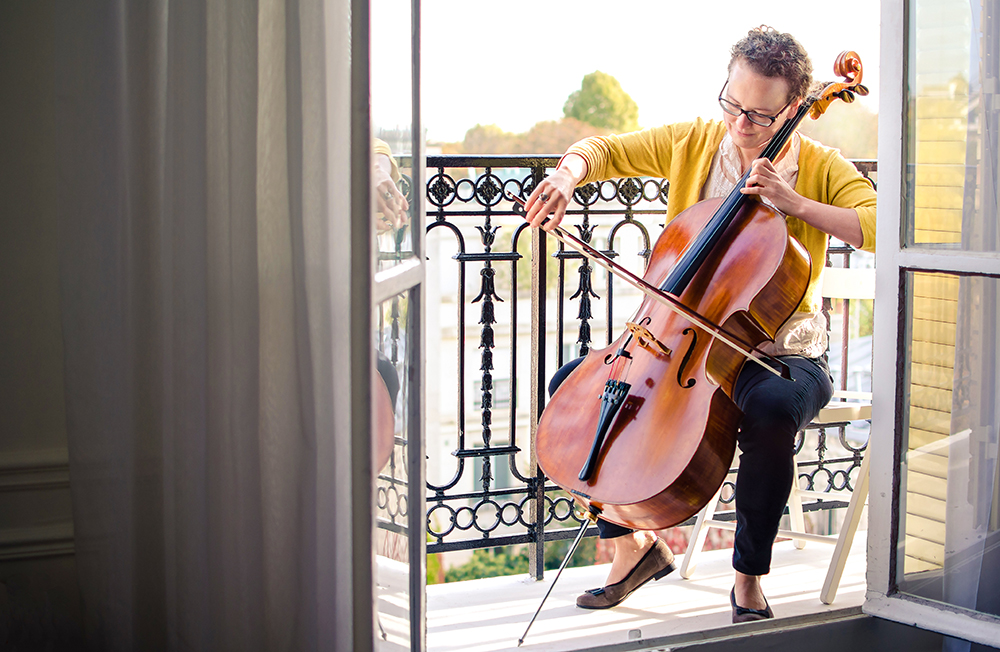- Research
Cultural events and quarantine are not a winning combination, but cultural groups aren’t giving up. They’re finding ways to keep audiences in touch with arts and culture despite the need for social distancing. Nathalie Casemajor, a professor at Institut National de la Recherche Scientifique (INRS), looks at the future of cultural praxis.
”Right now there’s no way to be in the same space-time with other people,” says Casemajor. “The kind of collective experience you get in a performance venue, for instance, is impossible.” Casemajor is also codirector of the Observatoire des médiations culturelles (OMEC).
Professor Nathalie Casemajor
Human beings need that collective experience, and new formats have sprung up to fill the gap. We’re seeing the “liveness” of events emerge as a concept—a dimension of being together across the distance. “Think of the artists livestreaming on social media, which makes it possible to share a moment, even when you’re at home,” she adds. That’s what the National Arts Centre is doing with its #CanadaPerforms program. Association des bibliothèques publiques du Québecis another. Its Heureduconte.ca platform hosts recorded and live stories that kids just love.” Dr. Casemajor’s research focuses on cultural action and digital media.
For all the online opportunities, Dr. Casemajor maintains that the need remains for people to push past mass experience and get in close. “There are some initiatives that address that need for personal contact,” she notes. “Théâtre national de la Collinein Paris came up with an idea they call Au creux de l’oreille (“between you and me”) based on readings over the phone. An actor calls, asks about the person on the other end of the line, then reads a theatre piece. Théâtre Périscope has since started doing the same thing in Québec.
Taking ownership of public space
The phone is one way to go beyond the screen, but it’s not the only one. Montréal publisher Paperole has launched a project in which illustrators create thank‑you posters for healthcare workers under the title Les couleurs essentielles (“the essential colours”). “It’s a cultural experience that uses tangible objects to create an emotional experience,” says Casemajor.
Other initiatives are aimed at sharing the public space at a distance. Musicians are performing on their balconies, such as singer-songwriter Martha Wainwright. People in Europe are projecting films onto neighbouring buildings to create a kind of balcony movie theatre.
The OMEC and Casemajor herself will be watching how these approaches develop in the coming months. “Things won’t be back to normal for a while, so we’ll need to think of how to share the space and time of collective experience of culture within the confines imposed by social distancing. Cars are already beginning to emerge as safe bubbles. It’s a symbol of comfort, kind of the way toilet paper was at the beginning of the crisis. In Québec they’re already talking about bringing back drive-in theater, and some musicians have talked about doing drive-in shows. But being in separate cars restricts how shared the experience can be.”
Gradual return
Other than looking to the car as a sort of safety blanket, Dr. Casemajor cites the possibility of some cultural organizations opening at half-capacity so that distances can be maintained. “The problem with that sort of solution is you’re operating at 100% of the usual cost. Will cultural institutions get funding to cover the losses?”
Just how much particular audiences want to get involved in culture is another big consideration affecting cultural recovery. “We’ll need to gradually emerge from our bubbles and learn how to be together all over again,” warns Casemajor. “Young people, for whom the disease is less risky, may be more open to returning to close proximity. Older people might be reluctant.”
* The Observatoire des médiations culturelles will be launching a series of online dialogues on the topic of culture and resilience with its cultural partners. The objective is to understand how the crisis affected their practices, what they did to adapt, and how they see the future of their organization.





